|
We found this wonderful article on distribution contracts for breweries over at www.craftbrewingbusiness.com written by Candace L. Moon of The Craft Beer Attorney, APC. We have re-blogged it for you below. Enjoy.
Original Source: Craft Brewing Business Contracts are a fact of life. You sign them as an individual and that will hold true for your brewery the more you grow and expand. That being said, when it comes time to distribute, there are unique considerations required before signing the dotted line. Distribution contracts have a special set of laws that govern what can and cannot be agreed to, the history of which can be traced to anti-monopolistic policies. Many brewers, unaware of the special waters they are treading, treat distribution contracts like any other contract. Unsurprisingly, distributors are also frequently as uninformed about what these special rules are, and it shows in the contracts they draft. This is a recipe for disaster down the road as breweries wish to adjust the distribution plans for their growing business. Ending a contractThe most pressing issue usually is how breweries can end a contract with a distributor. A number of states have adopted cause-only rules. At the most basic level, the rule says you cannot end a contractual relationship with a distributor without “good cause.” Some states go even further and define what good cause means, while others allow individual parties to contract those meanings for themselves. So what happens if you terminate a distribution contract without good cause? Under most state laws, the terminated distributor must be paid the fair market value of the distribution rights in relation to your particular brewery, including any goodwill that accompanies the relationship.If you are allowed to define what good cause can mean in the contract, then just about anything you want (and can convince the other party to agree to) is fair game. Simply write out a list of things that will constitute good cause in the contract, and that list will be binding. If you do not define good cause, then the fallback standard is usually impractically high, and your relationship with that distributor is generally not over until the distributor decides that it is. Popular choices when defining good cause include: failure to pay within a certain time period, failure to maintain minimum orders, and failure to meet minimum shipping and handling requirements. As an aside, it is worth noting that, as with all contracts, there are limits to what can be agreed upon. For example, every contract drafted within the United States is subject to the covenant of good faith and fair dealing. While the discussion of what that entails could be an entire article in itself, for now, know that everyone is legally bound to act honestly and fairly in his or her contracts. In a similar vein, some of the states that allow parties to define good cause for themselves restrict what can be agreed to even more tightly than good faith and fair dealing. A handful of states require that good cause must be limited only to what is considered commercially reasonable. Commercially reasonable is a moving target, but courts have looked to a variety of factors in the past when attempting to pin it down. One of the more popular approaches is consistency is contracting. In other words, your contract in one state might be compared to your other distribution contracts to see if the standards being applied are reasonably consistent. If you manage to negotiate better-than-usual terms in your distribution contracts, courts examining the contract may want to see that these terms were achieved in exchange for something of equal value. A matter of quid pro quo, so to speak. Some states go so far as to mandate that similar distributors be treated similarly; this is generally referred to as anti-discrimination or non-discrimination. Terminating without good causeSo what happens if you terminate a distribution contract without good cause? Under most state laws, the terminated distributor must be paid the fair market value of the distribution rights in relation to your particular brewery, including any goodwill that accompanies the relationship. Like good cause, some states dictate what is the fair market value and some allow the parties to decide for themselves. Regardless, the means of calculating this fair market value needs to be spelled out in the distribution contract so that there is no confusion (or litigation) later on. When allowed to define the value, different breweries have used different methods. One of the most popular approaches involves matching the profit for a certain number of months preceding the termination with a multiplier. How many months will of course vary based on the size of your brewery and the extent of distribution. Explicitly negotiate this with the distributor and include it, labeled as such, within the contract. Other special considerations include specific notice requirements when attempting to terminate the contract, the distributor’s right to cure any deficiency in the relationship, exclusivity requirements for particular territories, and anti-waiver provisions. Anti-waiver provisions accomplish several things. First, they void any out-of-state forum selection clause that the distribution contract has. Generally, parties can choose the law of any state they like regardless of where the parties are located or where the transactions are taking place. Certain states have decided that the regulation of alcohol distribution within its borders is so important that its own laws will govern irrespective of what the parties would prefer. Hence, distribution contracts in California, for example, will always be governed by California law, even if the parties agreed to use Colorado law instead. Note that many distributors are unaware of these rules and actually purport to waive this particular rule (sometimes explicitly, sometimes accidentally). Just know that, regardless of what the contract says when you sign it, if you are in an anti-waiver state, then that state’s laws will apply. Not every provision mentioned above applies in every state. Some states have very simple distribution laws; some states have very complex distribution laws. This is an area fraught with potential litigation pitfalls, so it is important to consult an attorney before signing the contract. You may very well be spending the rest of your brewery’s life with this distribution company, for better or for worse, so be sure to put all of your cards on the table before you walk down the aisle together in commercial matrimony. Candace L. Moon is a San Diego-based attorney who has spent the last four years dedicating her law practice to the craft beer industry. She has worked with over 100 craft breweries and craft breweries-in-planning nationwide, handling business entity formation, alcoholic beverage law, contract review, trademark law, as well as other legal needs. Her clients range from Green Flash and Drake’s to Jamil Zainasheff’s Heretic Brewing. Moon’s undergraduate degree is from the University of Virginia and her juris doctorate is from Thomas Jefferson School of Law in San Diego, Calif. She has been a member of the California State Bar since 2008 and the Brewer’s Association since 2009. Contact her at [email protected]; her website, www.CraftBeerAttorney.com; or her Twitter account,CraftBeerAttny. Original Source - Beverage Trade Network
BTN writes about the planning required by wineries, breweries and other brand owners to make their participation in Beer, Spirits or Wine Trade Show count. See helpful info below: How to Plan For Your Trade Show and Making Your Trade Show Display Stand Out 1.) Prepare, prepare, prepare! Get your marketing companies involved upfront and hold a planning meeting. It helps to have ideas from managers that have been to a lot of Trade Shows. 2.) Register and select a high traffic (open) space—it helps if you get registered very early on and attend the Show the year before so you know “the lay of the land.” 3.) Be sure to find out the size of the trade show display table you will have, whether there is wall space for your company sign, if there are electrical outlets available, and anything else that may or may not be included (i.e. a table cloth, etc.). Set a budget and stick with it—you can adjust for expenditures next year! 4.) Bring your own tablecloth, be sure to get one that complements your display and represents your company’s image and color scheme (without being overpowering). Even if a tablecloth is supplied, bring your own or something to add some depth to your table (i.e. a table runner). Your table will definitely stand out in a crowd. 5.) Set up a stand-alone presentation board. On the board, you can show how clients can benefit by using your services. Be creative and make it stand out. Include pictures, if possible, and be sure your company name and logo are more than obvious. 6.) If there is wall space, but your budget is minimal, use your trusty desktop publishing software to create a template of your company name. Use the template, along with bristle board, cardboard, or foam core to make a sign that you can put up on the wall behind your trade show display. 7.) Arrange your beverage brands or wine trade show display table in levels. Put the larger items at the rear, shorter items in front of those, and even shorter items in front of those. If you’re displaying beer, build a small bar so the patrons can sit at it and feel comfortable. If you’re displaying wine or spirits, make a small lounge with comfy couches. The customers will stick around longer if they feel comfortable in your booth. 8.) Show off your Brewery or your Winery--Develop a PowerPoint presentation or streaming video to display on your table. You can make it on your desktop computer and transfer it to a laptop, which you can rent or borrow if you don’t already have one. Your visitors will find this visually appealing and it will draw in their attention. Drawing Attention To Your Trade Show Display 9.) Draw attention to your booth: Have plenty of trade show logoed giveaways, such as business cards, brochures, pens, magnets, and anything else that has your company name and/or logo on it. Most people who attend trade shows are expecting to take home some goodies. Offer plastic bags with your brand name on them. And be sure to use display racks for showing your flyers, specials, brochures, and such. 10.) Offer something a little different as a trade show giveaway… FOOD. I displayed at the "NBWA" trade show in Las Vegas and included a basket of pretzels with horseradish mustard on my table—a great compliment for beer! They were a big hit; I wish I had bought more. If you can, package your food in a way that will allow you to have your company contact information on it. 11.) Offer Gift Certificates for some of your services as a trade show giveaway. There’s nothing better than getting a deal and when they “cash in” their certificate, they will see how valuable your services are and will come back for more. 12.) Have a drawing for a Grand Prize—get something nice (Logoed bicycle, motor scooter, decorated can for Parades, or blow up wine bottle are just a few ideas). Offer a prize that in some way complements your business if possible, and appeals to anyone. Have visitors and entrants sign a guestbook, fill in a ticket, or drop their business cards into a fish bowl or gift bag. The great thing about this trade show giveaway is that you can then use this information at a later date to make a follow up contact. 13.) Have a portfolio of your work available as part of your trade show display. Print off some of your best beer or wine displays or contests, put them into plastic sheet protectors, and arrange them in a binder. Then lay out the binder where visitors can flip through the pages. 14.) Hire the right help! If the trade show will be on for an extended length of time, be sure to have assistance in manning your trade show booth so you can take a break. If you don’t have the option of having someone take over for a bit, be sure to put up a note that tells people how long you will be gone or when you will be back. 15.) Most importantly, be friendly and inviting. Say "Hi" to those that turn and look toward you or your trade show booth. Strike up a conversation and be sure to have a short introductory speech ready. And… have fun! by Curt Prins (originally found on www.craftbrewingbusiness.com) Craft brewing is exploding in America. You, faithful CBB readers, know this. Per the Brewers Association last month, Americans now enjoy beer from more than 3,000 breweries with another 2,000 coming. This level of choice makes building a sustainable customer base challenging for craft brewers. Since 99 percent of craft brewers have limited distribution and budgets, most promotional methods remain financially out of reach, and are largely ineffective on a local scale. Unlike traditional tools, mobile marketing can have a huge, quantifiable impact on building awareness, generating taproom traffic and earning customer loyalty for craft brewers. And you don’t need the marketing resources of MillerCoors to impact your bottom line. In fact, most mobile marketing tools remain inexpensive, easy to use and simple to scale up. Having worked with many craft brewers, here are some quick suggestions: Start simple, with your websiteYour site is how people find out your taproom hours, who stocks your beer and what’s coming out of your tanks. It’s your information foundation. If your goal is to drive distribution sales or garner more awareness at beer fests, you won’t get far if people can’t access your information easily. Since people don’t walk around with laptops, make sure your site is optimized for mobile devices — both smartphones and tablets. If you fail to take this step, most of your mobile visitors will likely never return, your social media efforts will fizzle and your other marketing investments will be wasted. Many of my clients have found that mobile traffic to their website continues at double-digit growth and often exceeds that from desktop browsers. This step can’t be skipped. Focus on the beer fans and forget the restI’ve seen many of my craft brewers decrease their spending on traditional marketing tools like print ads or eliminate them altogether. That’s counter to typical marketing logic. Despite the blazing growth of craft breweries, big brewers still control 92.2 percent of the market. While that figure is eroding quickly, a majority of American beer drinkers still remain in the clutches of the big players with their massive national marketing budgets. And that’s OK. Keep in mind that you are brewers, not missionaries. The general public might not be ready for your over hop-ed IPA, but there are communities of hopheads out there craving for what’s next. And they’re easier to find than you might think. Focus your efforts on those who are as passionate about craft beer as you are, and unless you have wide distribution, it’s best to focus on cultivating a loyal base of beer fans nearby. This is where mobile, or more specifically, Social-Local-Mobile (SoLoMo), marketing excels. Mobile devices generate the bulk of social media sharing — 75 percent from Twitter and 51 percent of Facebook referrals — per comScore. And much of this sharing is local. Also, 94 percent of smartphone users have searched for local information, according to Google. Despite these facts, don’t waste your time building or buying social media followers. This happens naturally. With social media viewing rates at a paltry 2 to 5 percent, the value of tweets and Facebook posts is overblown. Just ensure that you’re optimized for local search and social sharing, then move onto their more powerful tools.
The strengths of Google, Facebook and Twitter lie in their mobile ad platforms. You can target by keyword, location and even demographics to reach local beer fans on their smartphones. When they Google a particular beer, tweet about an IPA or just see what their friends are up to, you can be prominently placed on their mobile devices to build awareness and drive traffic to your taproom or your beer fest booth. Unlike traditional marketing tools like advertising, you can spend $20 to test a mobile campaign and either scale it up or shut it down in real time depending on the results. For one brewer in particular, we tied mobile ads to locations close to the bars and stores that served and stocked their beer through a new distributor. The ads were a success and led to the fastest growth in craft beer sales that this distributor had ever seen in its 30 years in business. Mobile is not technology, it is behaviorDon’t focus on the technology because people are not mobile phones. People use their phones to snap pictures, answer quick questions and remain connected with loved ones. They also look for cheaper prices on big purchases, scan checks to save a trip to the bank, and find the nearest Chinese takeout place — and if it’s any good. These are all habitual actions, not technological advances. They become second nature after a few uses. When was the last time you told someone to “just Google it?” Focus on what customer habits you want to cultivate first — filling seats on slow nights, generating more growler refills or getting a holiday sales bump. Then align the mobile tools you need to achieve those objectives. This will save you from wasting money where it’s not needed. Leverage mobile trigger tools to convert your taproom or beer festsAfter optimizing and promoting, beer fans have arrived and are enjoying the fruits of your craft. Most brewers think that a great beer is enough to drive loyalty and keep them coming back. It isn’t. A great product combined with well-trained staff won’t necessarily guarantee a return visit or a purchase at their local beer store. With more than 3,000 craft brewers in America, it’s a drinkers’ market, and you need to leverage two mobile tools to convert people from first-time visitors to frequent regulars. When they’re onsite, get them to join your email list, or more importantly, your text messaging (SMS) list. It won’t be easy. After their social security number, their mobile number is the most valuable number they own. When was the last time you told someone to “just Google it?” Focus on what customer habits you want to cultivate first — filling seats on slow nights, generating more growler refills or getting a holiday sales bump. Then align the mobile tools you need to achieve those objectives.Offer the right incentive like a free pint or exclusive access to special offers to drive opt-ins. Ensure that your signage, servers, and even your coasters feature a prominent call-to-action for them to join your SMS list with ease. And if you’re worried about abuse or list churn, most platforms offer controls to combat fraud and typical retention rates remain at 97 percent within a week of joining. Don’t forget to create separate SMS lists for your VIPs, beer clubs and other groups. Contests, especially when you’re at beer fests, are also great at building lists. A client of mine donates a beer for life membership every year to raise funds to local charities. That annual raffle still drives the most people to opt into its general SMS list. Use messaging to keep customers coming backBuilding your SMS list won’t happen overnight, but you should see a noticeable impact quickly. Using minimal incentives, like a free pint, you could build a respectable list of 500 people within three to four months. Even my smaller brewery clients have built lists over 1,000 within a year. You don’t need to wait until you have a large list to start messaging those who’ve opted in. It might take a few months to find your mobile messaging groove, so start right away. When possible, align your beer releases on slower nights and use your SMS list to fill your taproom. Promote your attendance at local beer fests for your fans who will likely be there — drive them to your booth with special swag to reward their loyalty and promote your brand at the event. Build a growler SMS list and promote special pricing to help reduce inventory. While you don’t want to send out more than 3-5 messages a month, one of the most effective uses of SMS I’ve seen is a brewpub client who created a separate list tied to the annual beer week in her state. She promoted the list via the local press, social media and other means to quickly build a list of over 250 beer fans. She then sent out a daily text message promoting the special offer of the day to drive her busiest week of the year. Keep in mind that it’s a drinkers’ market — simply brewing great beer isn’t enough to garner success and the loyalty of beer fans. That said, you can easily leverage these mobile tools to grow your brewery. Be sure to concentrate on the behavior of customers and not the technology to build a foundation and focus on beer fans. Once they start arriving and buying, offer a little incentive to get them opted in and keep them coming back. Curt Prins is a Minneapolis-based mobile strategist focused on beverages, CPG and retail. Harkening back to his college days in inner-city Detroit, he’s on a personal quest for more craft brewed malt liquor. 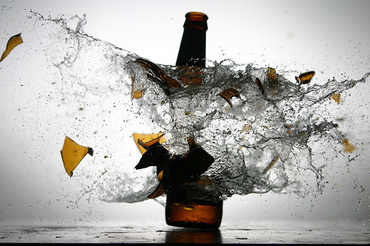 The article below as originally found on www.craftbrewingbusiness.com, written by Chris Crowell and published on 8/7/14. It examines the particular case of 10 Barrel Brewing Co's recall and paints an excellent picture of a why Liability Insurance is a MUST for Breweries... "10 Barrel Brewing Co. conducted a voluntary recall of two of its beers, Swill and Beer #1 from its number series, after discovering that some of the product may be experiencing secondary fermentation in the bottle, causing over carbonation. As a precaution, 10 Barrel Brewing removed all inventory of Swill from its wholesalers and retail shelves and asked that customers immediately dispose of any Swill already purchased. “Swill is brewed with a completely different process than any of our other beers, isolating this issue to only Swill,” the company noted in its recall notice. “This recall does not affect any of 10 Barrel Brewing’s other products and we’re completely confident that all of our other beers are of the highest quality.” 10 Barrel also added this: Consumers: if you have any Swill in your home, please do not open it, attempt to transport it, or return it to your retail store. Dispose of the product by following these steps: (i) Before disposing of any bottles of Swill, please put on protective gloves and eye wear; (ii) Place all remaining Swill bottles in a closed box and place immediately in a secured dumpster or trash container outside. “We take the utmost pride in producing an extremely high quality product and continuously striving for new and innovative beers to send to the consumer. Unfortunately in this instance, despite a rigorous testing and brewing quality-‐check process, we didn’t hit the mark,” the company stated. So, what was the problem? Apparently it stems from an enzyme the team was using that was meant to break down complex starch strains and reinvigorate early fermentation in some of its sour beers." Hopefully, 10 Barrel Brewing Co. was insured, because if anyone DID get injured by their over-carbonated beers, they could be on the hook for a lot of money. To learn more about Liability Insurance and other coverages we can provide your brewery, contact us for a quote BY CLICKING HERE. |
WinStar
|
|
© 2024 WinStar Insurance Group
13625 Ronald W. Reagan Blvd. Building 3, Suite 100 Cedar Park, TX 78613 |
IMPORTANT NOTE: This Web site provides only a simplified description of coverages and is not a statement of contract. Coverage may not apply in all states. For complete details of coverages, conditions, limits and losses not covered, be sure to read the policy, including all endorsements, or prospectus, if applicable. Coverage CANNOT be bound, amended, or altered by leaving a message on, or relying upon, information in this Website or through E-Mail.
Licensed & doing business in the following states only: Texas, New Mexico, & Oklahoma
Licensed & doing business in the following states only: Texas, New Mexico, & Oklahoma


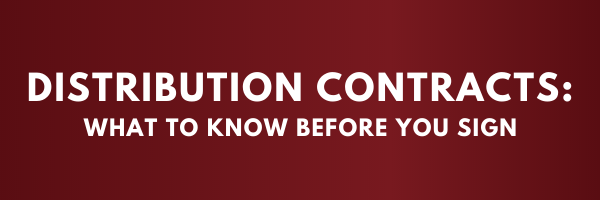
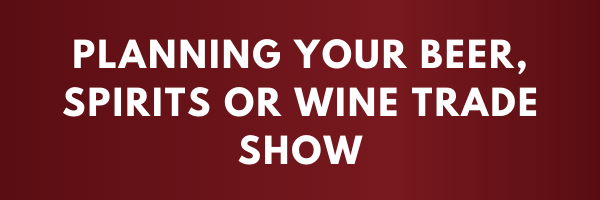
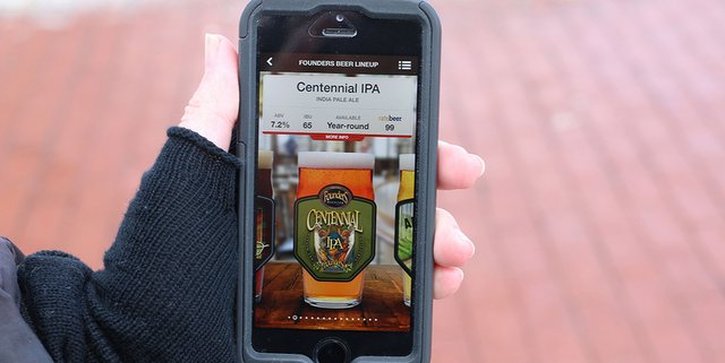
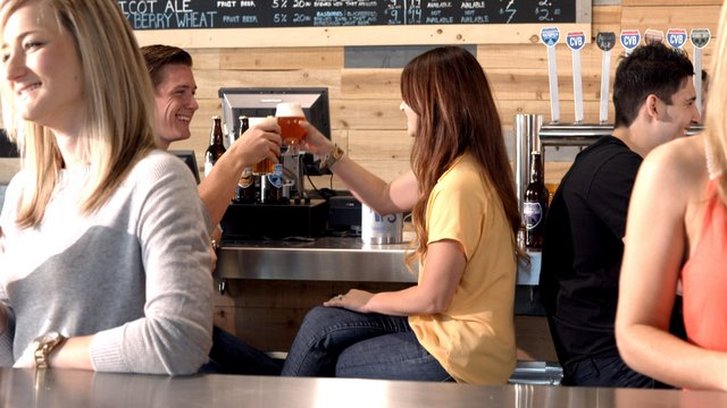
 RSS Feed
RSS Feed


